Los Angeles-based artist Eamon Ore-Giron describes his practice as an ongoing conversation with the ancient worlds of Mexico and Peru. But these conversations are anything but sacrosanct. Point in case: Talking Shit with Viracocha’s Rainbow (Iteration I) and Talking Shit with Amaru (Wari), two large-scale, geometricized visions of Andean deities, which are now on view in the Whitney Biennial in New York. Bold and bright, the paints are undeniably contemporary.
These two works mark a return to Ore-Giron’s “Talking Shit” series which he began in 2017. Also encompassing textiles and mosaic works, the series is the artist’s way of engaging ancient traditions with a frankness and intimacy that brings these often obscured rituals and systems back into the fold of contemporary life. The artist is also well known for his “Black Medallion” and “Infinite Regress” series.
Born in 1973, the son of a Peruvian father and Irish mother, Ore-Giron grew up in Tuscon, Arizona, where indigenous, Mexican, and American cultures dynamically intersect. The artist later spent time living in Mexico City as well as Huancayo and Lima, Peru, before moving to Los Angeles.
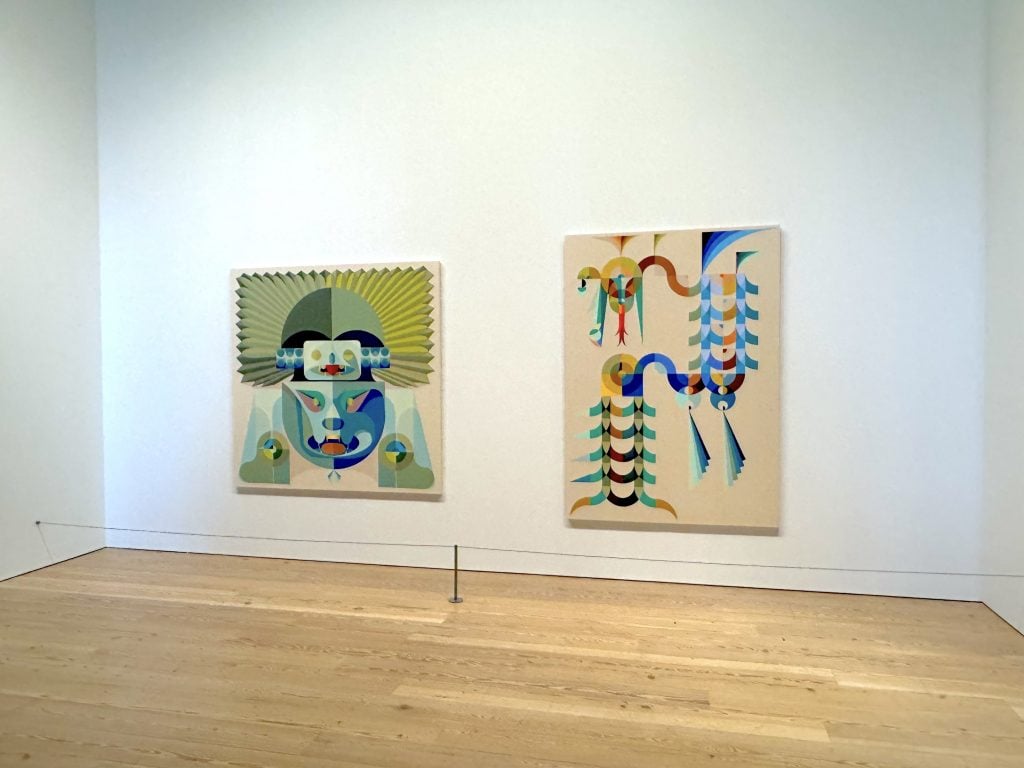
Installation view of Eamon Ore-Giron, Talking Shit With my Jaguar Face (2024) and Talking Shit With Amaru (Wari) (2023). Photo by Ben Davis.
Across all his works, Ore-Giron synthesizes artistic, musical, and literary reference points to form his stylized geometric aesthetic. The language of Brazilian Neo-Concretism, Incan arts, Italian Futurism, and Russian Suprematism fuse with forms and ideas found in architecture, textile design, and music. Ore-Giron is a DJ, too, and his approach to music is just as wide-reaching and experimental.
Ore-Giron, who is represented by James Cohan Gallery, is currently working on a public commission for the L.A. Metro and a large-scale commission for the Phoenix Art Museum, which will be unveiled in early 2025
We recently caught up with the artist at his L.A. studio where he told us what keeps him motivated, what it means to be included in the Whitney Biennial, and what he’s listening to right now.
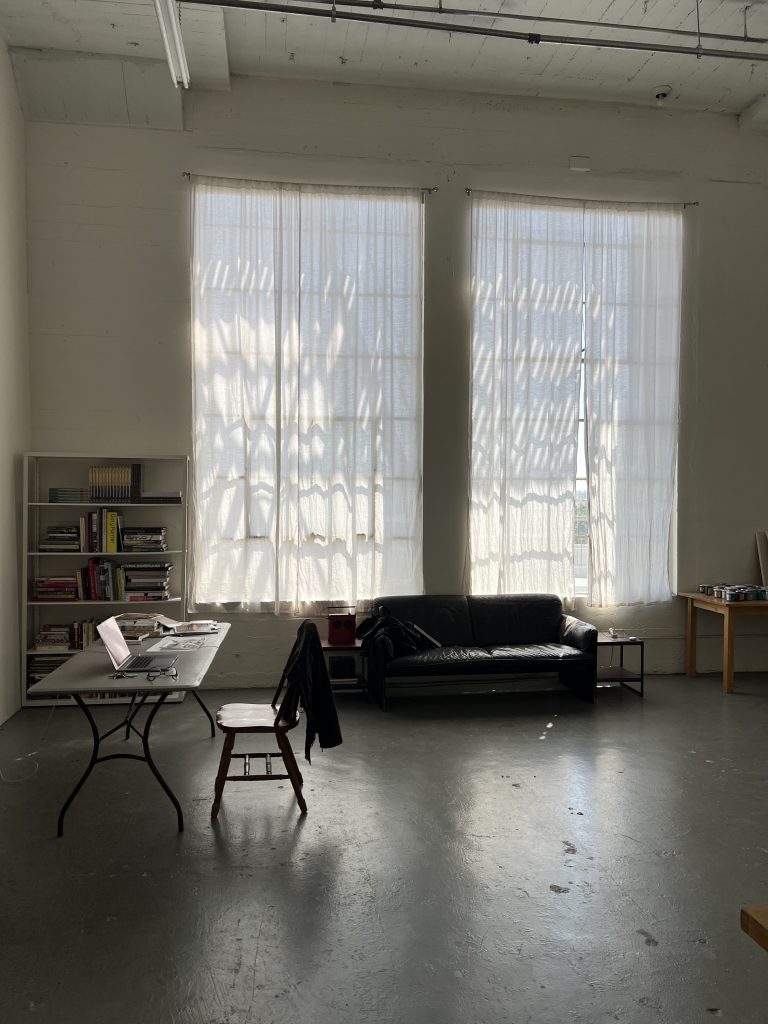
Eamon Ore-Giron’s downtown Los Angeles studio. Courtesy of the artist.
Tell us about your studio. Where is it and what kind of space is it, etc.?
My studio is spread across two spaces on separate floors, one is where I sketch, read, and think; the other is where I paint. It’s in the middle of downtown L.A. in a building with tall ceilings and a nice fire escape where I like to sit and watch the street action. I’ve been here for a long time so I’ve seen a lot of changes.
Back in the mid-aughts, I shared one of the floors with a group of really great artists. We would have shows and interesting performances by groups like Extended Organ, Mike Kelley, and Paul McCarthy’s band. Other studios I’ve had in the past felt impermanent, this place feels like home. I also really like how close it is to where I live. It’s very centrally located, which in L.A. is a plus.
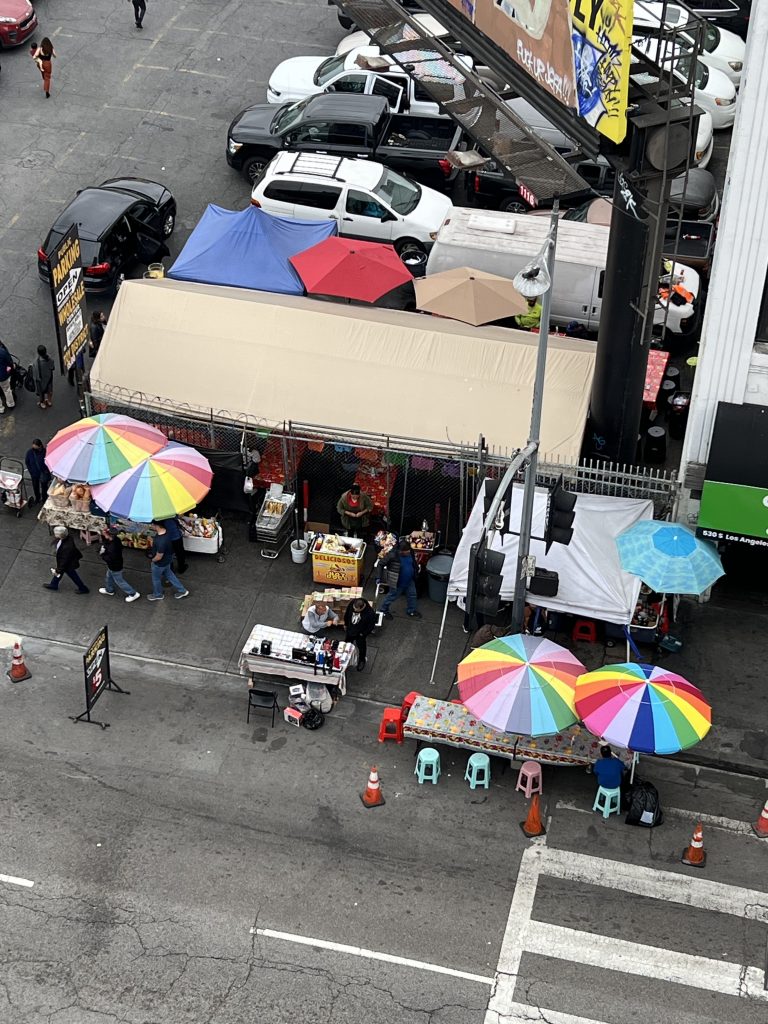
Street view from the fire escape of the artist’s studio. Courtesy of Eamon Ore-Giron.
Your works blend together architectural structures, cosmic mappings, South American textiles, hieroglyphics, and Indigenous symbols. How do you come up with your compositions? Do you keep objects of inspiration in your studio?
I recently read The Andean Futurist Manifesto by my friend the Peruvian artist Alan Poma. He talks about how information and ritual in the Andean world were hidden within geometry and pattern to avoid destruction by the Catholic church. Being around texts like Alan’s and being exposed to new ideas and new ways of thinking and seeing is how I access my compositions.
Creatively, I’m an omnivore. I take inspiration from painters such as Rubem Valentim; architects like Carlo Scarpa and Lina Bo Bardi; and sculptors such as Martin Puryear, Anthony Caro, and Ron Nagle. Some objects of inspiration in my studio are my Chapayeka figurines (Yaqui ceremonial dancers from Arizona and Mexico) that I inherited from my parents.
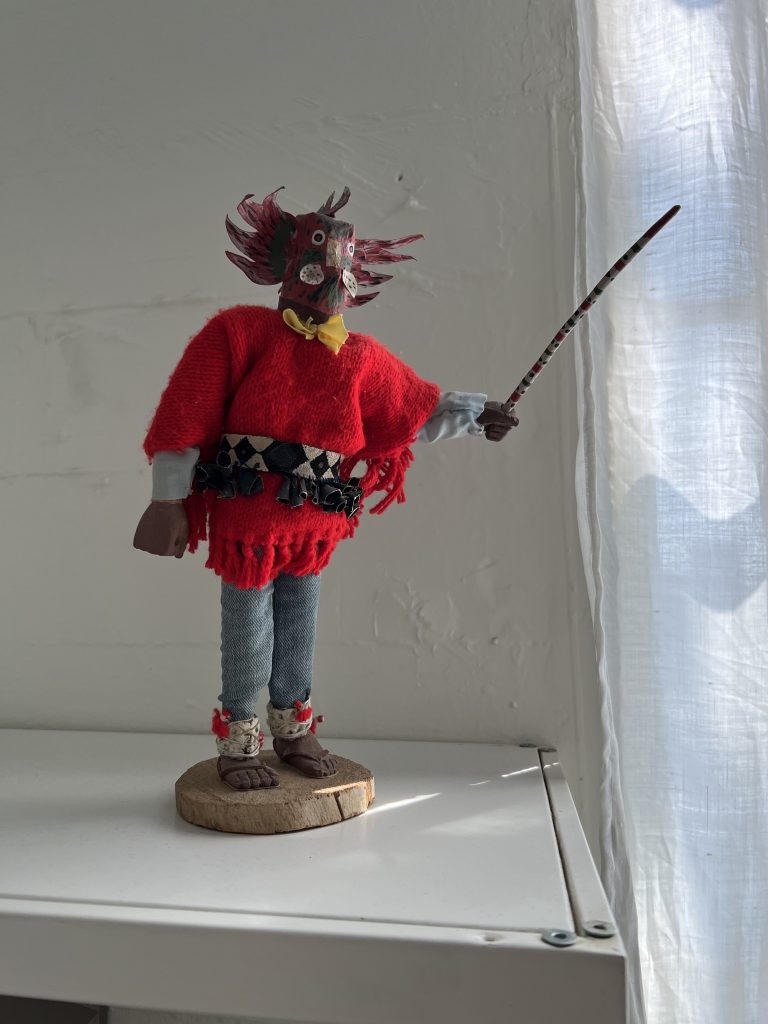
Chapayeka figurine in Ore-Giron’s studio. Courtesy of the artist.
You have work included in the Whitney Biennial right now—can you tell us about that work and how it feels/ what it means to be included?
The work included in the biennial is from my Talking Shit series which I started while living in Guadalajara Mexico in 2017. The “Talking Shit” series is a pictorial conversation that I imagine having with the deities of the Americas such as Viracocha, the creator god of the Andean world. In addition to the deities, this body of work includes my own interpretations of sacred objects from the Americas, and a good example of that is the piece Talking Shit with My Jaguar Face (2024) which is in the [Whitney] Biennial. In addition to the paintings, this series encompasses textiles, performance, sound, and an engagement with craft artisans in Mexico. I think of the whole project as a vehicle for collaboration and conversation with artists with roots in the Americas.
People are mostly familiar with my “Infinite Regress” body of work so it feels great to be able to introduce audiences to this other series in such an important venue as the Whitney. The reception has been amazing, I really love the sensibility and vision that Meg Onli and Chrissie Iles brought to the biennial.
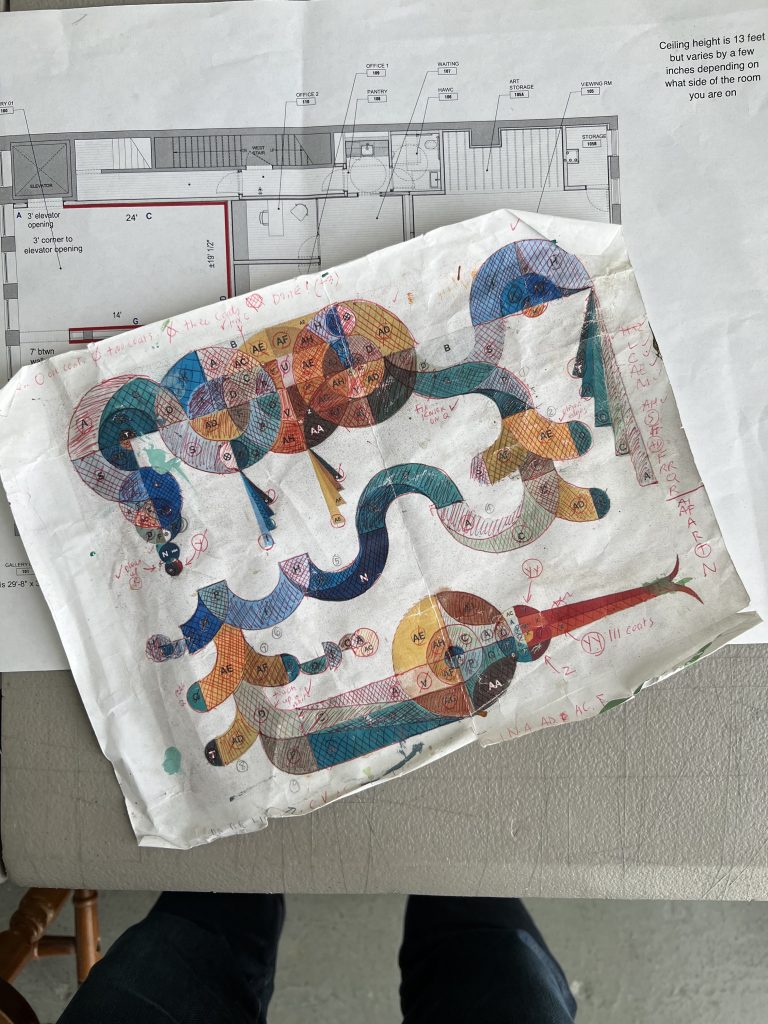
Color coding plan for a mural in Hermosillo, MX. Dubplate used by the artist to make circles. Courtesy of Eamon Ore-Giron.
I know you’re a DJ as well as an artist. How did you get into that? How do these two creative endeavors inform or influence one another?
I go by DJ LENGUA. I’m not a typical type of DJ, I see myself more akin to a selector. As a producer and DJ, I have always been very influenced by the sounds of South America and Mexico. I was introduced to Mexican sonideros in the mid-90s, and they showed me the power of listening south. That concept expanded into my painting practice by orienting my vision southward as well. Sometimes the music and the painting intersect, and at other times they are separate but they both share a certain consciousness of space and rhythm. I also like to make experimental and abstract music and incorporate it into performances. I think the thing I enjoy about performance and experimentation is that a lot of times it’s just about an experience. It’s not something you need to like to enjoy or get something from.
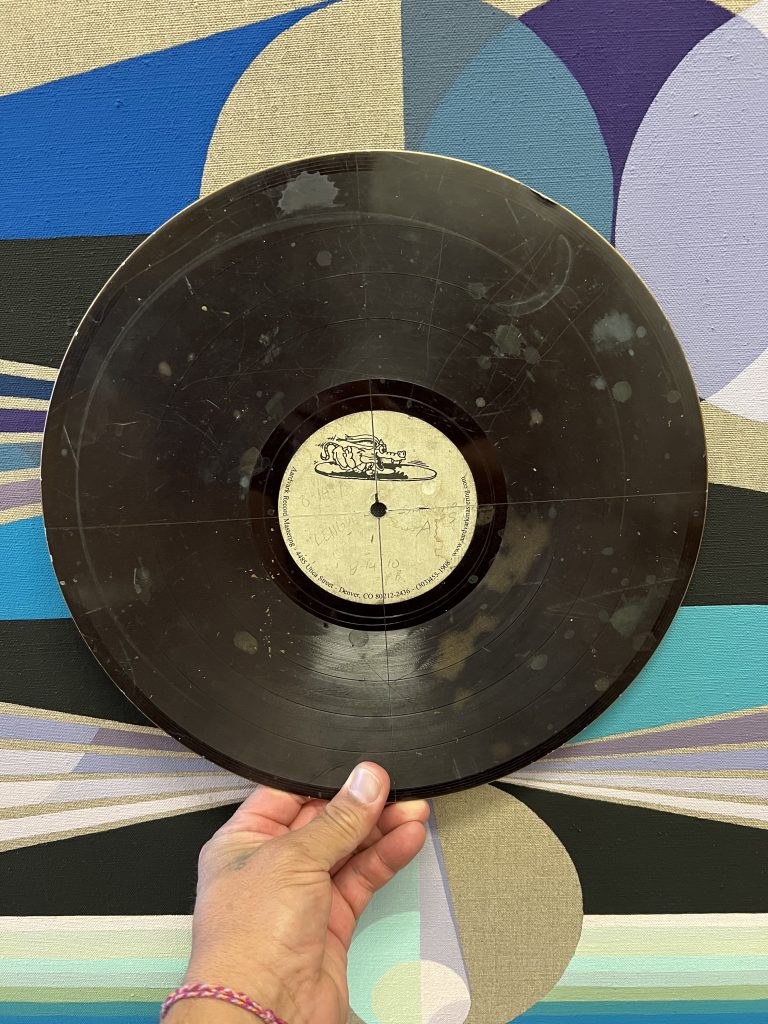
Dubplate used by Ore-Giron to make circles. Courtesy of the artist.
Do you listen to music while you work in the studio? If so, what’s on your soundtrack?
Yes, I listen to lots of different types of music in the studio. Here are some things on my playlist right now: Chuquimamani-Condori, Aphex Twin, Panda Bear, El Chinito del Ande, Eduardo Mateo, Peruvian harp music, Dublab radio.
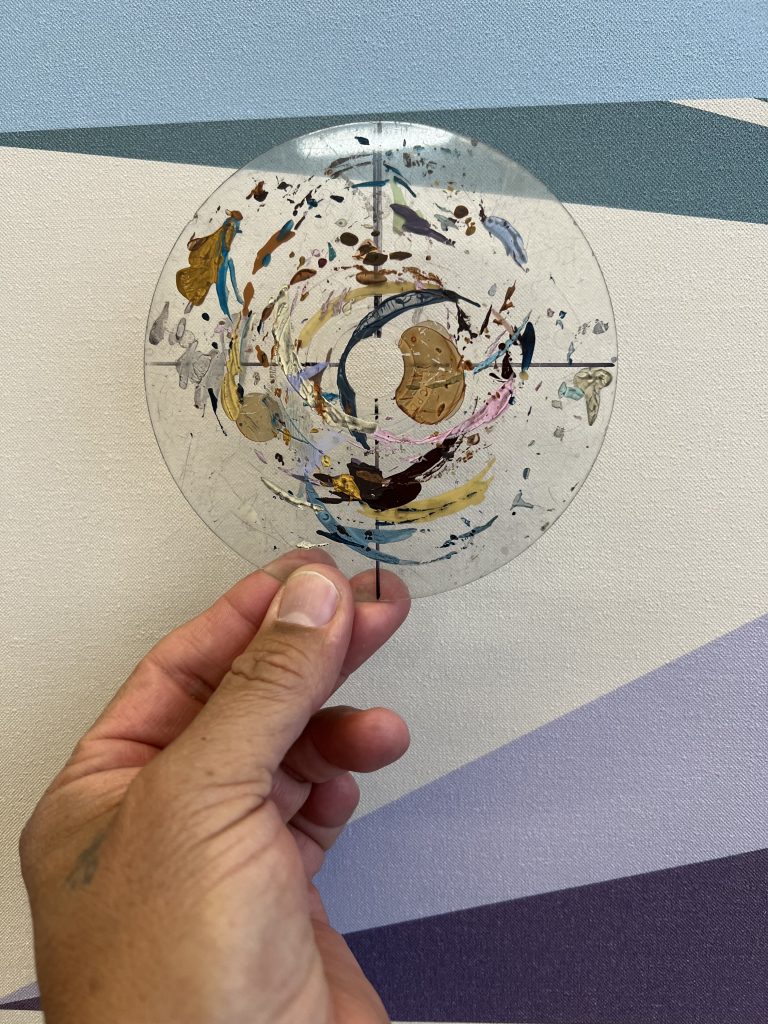
Clear CD used by the artist to make circles. Courtesy of the artist.
When you feel stuck while preparing for a show, what do you do to get unstuck?
Pick up a book, make drawings.
What tool or art supply do you enjoy working with the most, and why?
I like to make circles with a clear CD (they used to use these when you bought a stack of CDs to burn) I’ve had forever and the dubplate to my second DJ LENGUA album, Cruzando, from 2010. These objects have been with me for a long time. They’ve been integral to so many shapes I make.
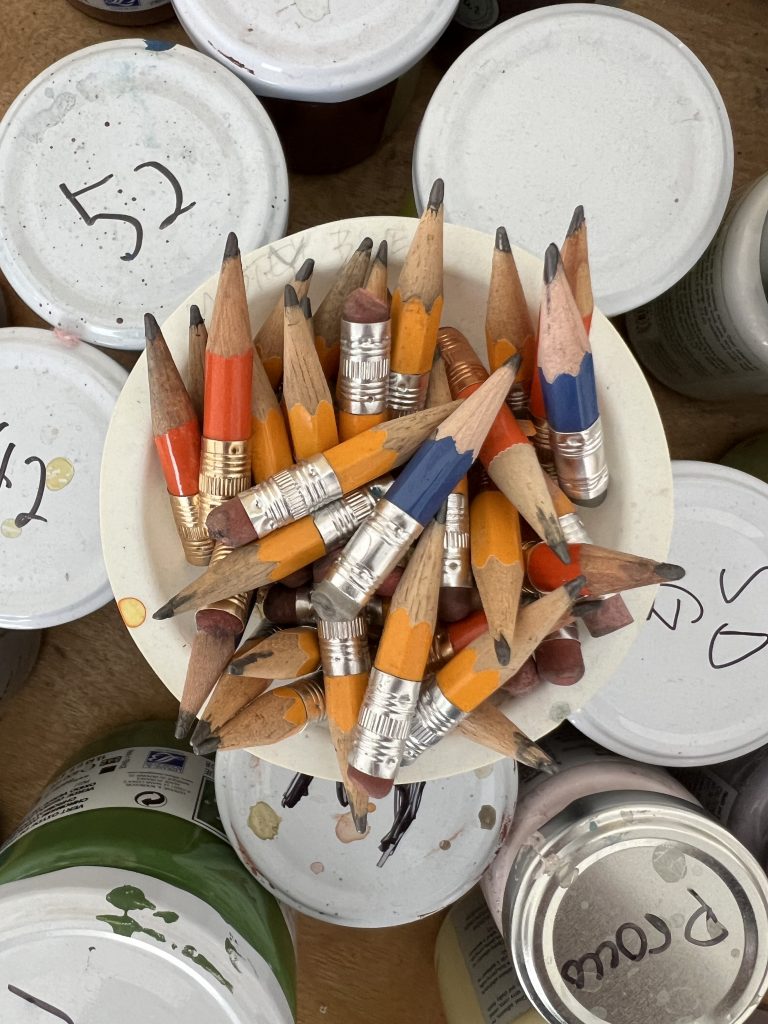
Nubs of pencils used in drafting. Courtesy of the artist.
Follow Artnet News on Facebook:
Want to stay ahead of the art world? Subscribe to our newsletter to get the breaking news, eye-opening interviews, and incisive critical takes that drive the conversation forward.
"artist" - Google News
May 16, 2024 at 05:25AM
https://ift.tt/XurFh0q
Eamon Ore-Giron Is a Creative Omnivore. Here’s What Keeps the L.A. Artist Inspired - artnet News
"artist" - Google News
https://ift.tt/4B1rlOu
Bagikan Berita Ini














0 Response to "Eamon Ore-Giron Is a Creative Omnivore. Here’s What Keeps the L.A. Artist Inspired - artnet News"
Post a Comment